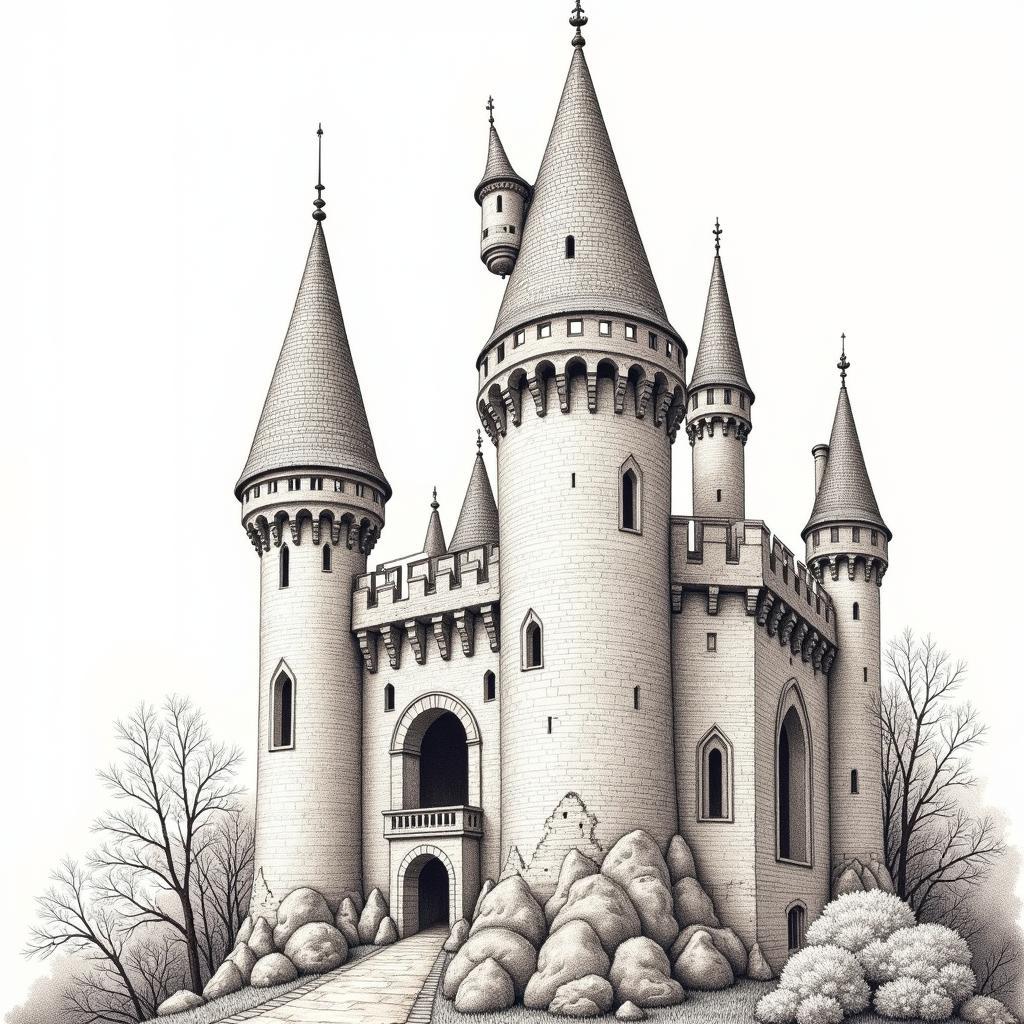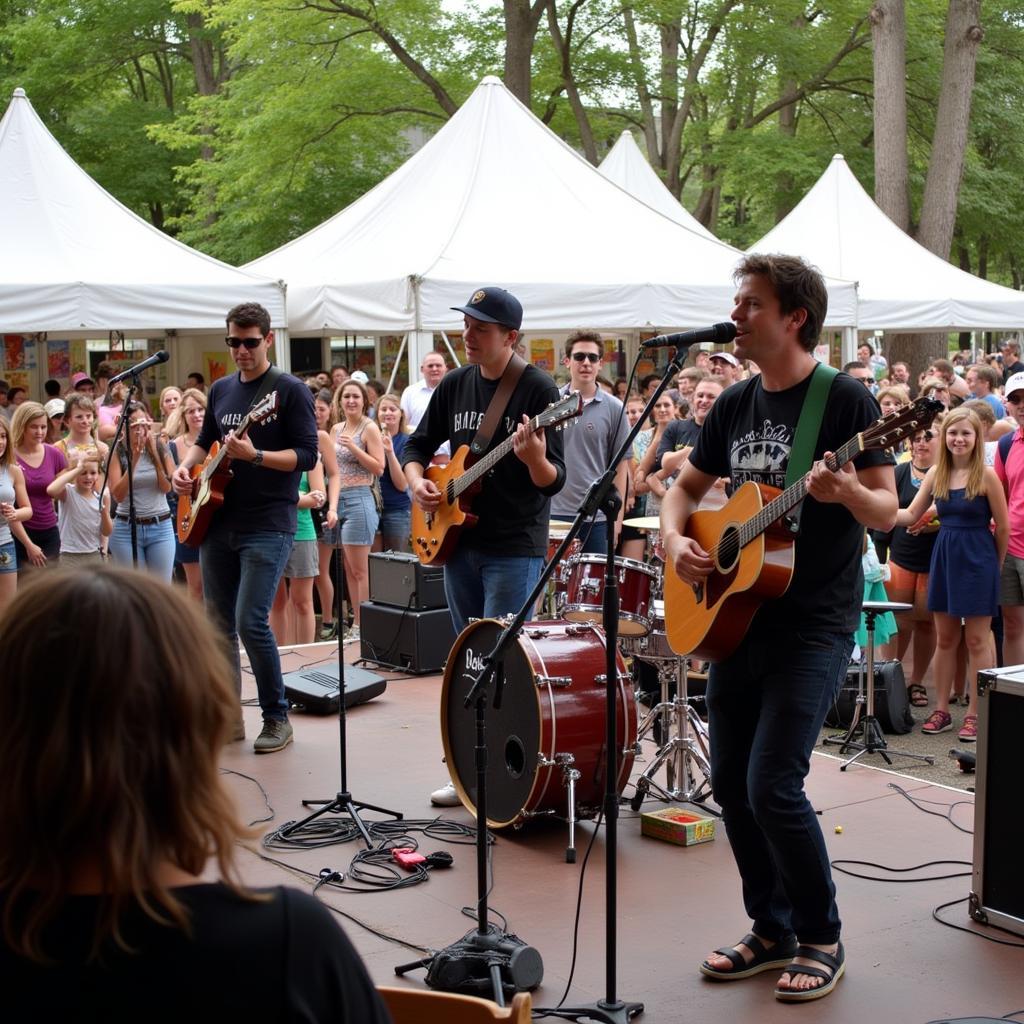Unleash Your Inner Artist: Mastering Castle Art with Watercolor Pencils
Creating stunning castle art with watercolor pencils is a rewarding experience that blends technical skill with artistic expression. Whether you’re a seasoned artist or just starting your creative journey, this guide will equip you with the knowledge and techniques to bring magnificent castles to life on paper. From understanding basic watercolor pencil techniques to capturing the intricate details of castle architecture, we’ll explore everything you need to know to create your own breathtaking castle masterpieces.
Getting Started with Castle Art and Watercolor Pencils
Before diving into the world of castle art, it’s essential to understand the unique properties of watercolor pencils. They offer the precision of colored pencils combined with the fluidity of watercolors, allowing for a versatile range of effects. You can layer colors, blend them seamlessly, and create washes of vibrant hues. Experimenting with different techniques like dry layering, wet-on-dry, and wet-on-wet will open up a world of possibilities for your castle creations. Choosing the right paper is also crucial. Opt for a heavier weight watercolor paper that can withstand the water without buckling.
Having the right tools and materials is the first step to success. Gather high-quality watercolor pencils, a selection of brushes (round and flat), a water container, a palette for mixing, and some paper towels for blotting excess water.
Mastering Watercolor Pencil Techniques for Castle Art
Mastering a few key techniques will significantly enhance your castle artwork. Layering is a fundamental technique that involves applying multiple layers of color to build depth and richness. Start with lighter colors and gradually add darker shades to create dimension. Blending is another essential skill that allows you to create smooth transitions between colors. You can blend colors using a wet brush, a dry brush, or even your finger, depending on the desired effect. Experiment with different blending techniques to discover what works best for you.
The wet-on-dry technique involves applying dry watercolor pencil to dry paper and then blending with a wet brush. This creates a vibrant and textured effect. The wet-on-wet technique involves applying wet watercolor pencil to wet paper, resulting in a softer, more diffused effect. Both techniques have their own unique characteristics and can be used to create different atmospheric effects in your castle art.
“Understanding the interplay of light and shadow is paramount to bringing your castle art to life,” says renowned watercolor artist, Amelia Dubois. “By carefully observing how light interacts with the castle’s form, you can create a sense of depth and realism.”
Capturing Architectural Details with Watercolor Pencils
Castles are renowned for their intricate architectural details, from towering turrets to arched doorways and intricate stonework. To accurately depict these details, it’s crucial to observe closely and break down the complex structures into simpler shapes. Start by sketching the basic outline of the castle with a light pencil. Then, gradually add details, paying attention to the proportions and perspective. Use hatching and cross-hatching techniques to create texture and shading, giving the castle a three-dimensional appearance.
Don’t be afraid to experiment with different line weights and shading techniques to create a sense of depth and volume. Use darker values to depict shadows and lighter values to highlight areas where light hits the castle.  Detailed Castle Drawing with Watercolor Pencils Showing Architectural Nuances
Detailed Castle Drawing with Watercolor Pencils Showing Architectural Nuances
Bringing Your Castle Art to Life: Adding Depth and Atmosphere
Once you’ve mastered the technical aspects, it’s time to infuse your castle art with depth and atmosphere. Consider the surrounding environment and how it interacts with the castle. Is the castle nestled amidst rolling hills or perched on a craggy cliff overlooking the sea? Adding elements like trees, foliage, water, and clouds will enhance the overall composition and create a sense of place.
“Adding a touch of imagination can elevate your castle art to another level,” advises celebrated illustrator, Henry Cavill. “Consider incorporating fantastical elements, like dragons soaring overhead or mystical creatures lurking in the shadows, to create a truly captivating piece.”
Conclusion
Creating castle art with watercolor pencils is a journey of exploration and discovery. By embracing the unique properties of watercolor pencils and mastering the essential techniques, you can unlock your artistic potential and bring your castle visions to life. So grab your pencils, unleash your creativity, and embark on a magical artistic adventure. Remember to experiment, have fun, and let your imagination soar as you create your own breathtaking castle masterpieces.
FAQ
-
What type of paper is best for watercolor pencils?
Heavyweight watercolor paper is recommended. -
Can I mix watercolor pencils with other mediums?
Yes, you can combine them with other water-based mediums. -
How do I prevent my watercolor pencils from breaking?
Avoid applying too much pressure. -
What are some good castle art resources?
Online tutorials and art books can be helpful. -
How can I improve my watercolor pencil techniques?
Practice regularly and experiment with different techniques. -
Where can I find inspiration for castle art?
Look at historical photographs, visit castles, or explore fantasy art. -
How do I store my watercolor pencils?
Store them in a cool, dry place to prevent damage.
Situations where these questions are commonly asked:
These questions are typically asked by beginners exploring watercolor pencils, art students looking for guidance, and hobbyists seeking to improve their skills. They might be posed in online art forums, during workshops, or in art supply stores.
Related articles and questions
Explore more about best arts and crafts gifts for 5 year olds.
For support, please contact us at Phone Number: 02462573573, Email: danteum@gmail.com, or visit our address: Savico Megamall, 7-9 Đ. Nguyễn Văn Linh, Gia Thụy, Long Biên, Hà Nội 10000, Việt Nam. We have a 24/7 customer service team.
